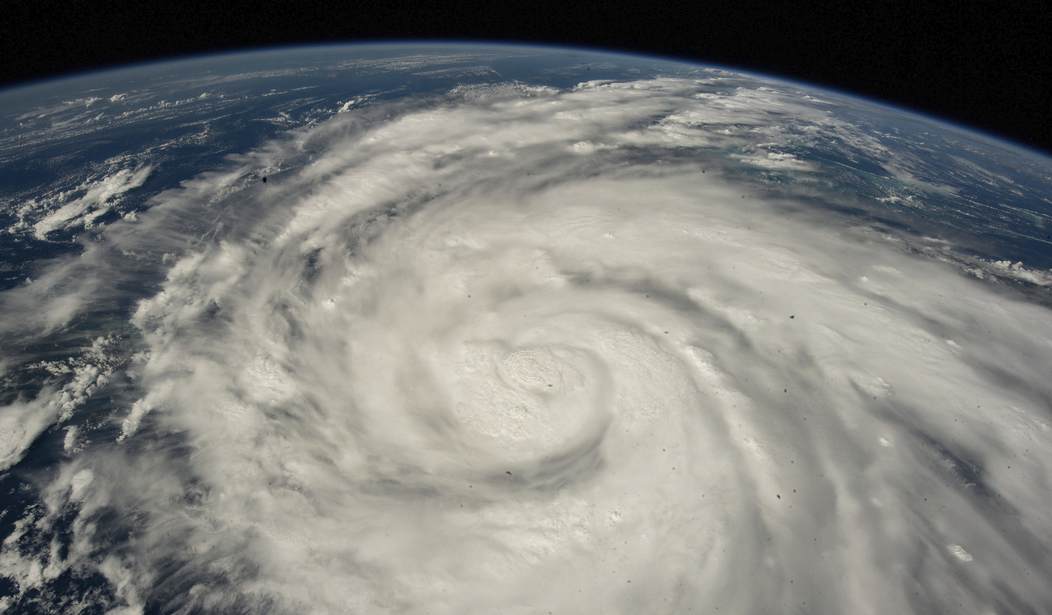Today's title, capital letters and all, courtesy of my friend and colleague Steve Green a/k/a the Vodkapundit. When I find something I like, I bookmark it and send it to him, and this was his reaction...
This week, after the feedback last week, I'm not trying to make a theme; I just picked my favorites. The first one is this shot of the Milky Way and Mount Fuji. Looking at it, frankly, I'm sure it took some work at least to find the exactly right vantage point, and the stars are awfully bright, and you know what? I don't care.
Mount Fuji with an eruption of stars pic.twitter.com/mCUpJvQVbv
— Space 8K (@uhd2020) October 23, 2024
Back at the dawn of time, when I was taking an Astronomy 101 class, I really admired a black and white picture of the Horsehead Nebula. Today, we have the Flame Nebula. If you look closely, the Horsehead Nebula is that tiny little chess knight thing in the middle. In color, of course. Amazing how things have changed in 50 years.
IC434 Horsehead and flame nebulq by cosmonautroger: https://t.co/bld1GQ4DdY pic.twitter.com/x3aEFaRIwu
— Julio Maiz (@maiz_julio) October 24, 2024
Supernovae are always good for some exciting pictures. Famously, a supernova in 1054 CE was recorded all over the world; we see its remnants today in the Crab Nebula. A century later, another supernova was seen. It gets no respect.
News
— Black Hole (@konstructivizm) October 25, 2024
The supernova SN 1181, observed in 1181 AD and described as a "guest star" by Chinese and Japanese astronomers, has long puzzled scientists due to its unique characteristics and the lack of a traceable remnant until recently.
In 2021, astronomers identified SN 1181's remnant… pic.twitter.com/99cr5GjyyX
The Tulip Nebula. No particular pithy little comment here: it's pretty. Just enjoy it.
Sh2-101 The Tulip Nebula in Cygnus constellation https://t.co/1zulYohXa4 pic.twitter.com/oz0qBZotua
— Alienigena11 (@Madriles6211) October 24, 2024
This one doesn't even have a romantic name, just a catalog number: NGC 602. "NGC" stands for the New General Catalog, in case you've ever wondered.
This is a James Webb Space Telescope (JWST) picture. Something to remember is that the JWST is not a visible light telescope. It observes infrared because infrared passes through dust and gas that blocks visible light. Any JWST picture you see is necessarily a false-color picture, processed to make the details clearer for those of us limited to visible light.
NGC 602 is a beautiful young star cluster near the outskirts of the SMC Galaxy about 200,000 light years away from Earth. The cluster contains several young brown dwarfs, which are low-mass stars that don't accrete enough mass to become fully fledged stars. 📷 ESO/Webb #NGC602 pic.twitter.com/0HSs0p9vY2
— Lee-Anne Gibbon (@LeeAnneGibbon1) October 24, 2024
Another one that is here just because it's pretty.
M42 Great Orion nebula, Pinterest. pic.twitter.com/N5RW4fGAuO
— Julio Maiz (@maiz_julio) October 23, 2024
Closer to home, we don't want to forget our own hometown star, the Sun. Solar astronomy has advanced as much or more than deep space astronomy, giving us views that would have been artists' renditions 10 years ago. Like this one.
Some long duration #SolarFlare activity over the Sun’s eastern limb, with flare loop growth and high-altitude downflows persisting for 36 hours! This source region will rotate to face us in the coming days. #spaceweather pic.twitter.com/aaFXPNU0fN
— Dr. Ryan French (@RyanJFrench) October 23, 2024
Another cool comet picture. Actually, it looks pretty cold.
I saw it in my mind, planned how and where to shoot it…wasn’t expecting snow.
— RandyMilanovic (@randymilanovic) October 23, 2024
Comet A3 Atlas over a frosty ForgetMeNot Pond in the foothills of the Canadian Rockies with the Milky Way filling the night skies.
I will never forget the week Atlas passed overhead.
Details below. pic.twitter.com/u3kAk8wCLY
One thing that is a little hard to grasp is how all sorts of ancient people built monuments of various sorts oriented to sunrise on a solstice. You even see ancient astronaut enthusiasts suggesting there must have been so group of aliens or some secret society sharing the information.
This is how it was done: over some years, people observed that the Sun rose farther and farther in one direction until it reached that big tree, stood still for a few days, and then headed back. (Which is why it's called a "solstice.")
13 photos of the sun, every month, in the same place. pic.twitter.com/KFCQVUviLE
— Curiosity (@MAstronomers) October 23, 2024
More aurora, because, well, aurora. Equal time for the South Pole here.
Aurora Australis over the South coast of New Zealand pic.twitter.com/ysGh4hscI8
— Black Hole (@konstructivizm) October 25, 2024
Our final candidate for today is the famous “Pillars of Creation”. Besides being gorgeous, this comparison shows off the difference between a 1995 visible light photograph from Hubble — already historic — and the amount of detail the JWST can provide.
Hubble vs Webb pic.twitter.com/jqnCOH9jFC
— World of Science & Technology (@worldofscitech) October 22, 2024
And now a word from our sponsor. We’re all VIPs here already, but not long ago, Townhall Media, PJ’s parent company proposed a new membership category called Platinum. With it, you get a $25 discount code for the new merch store and direct access to your favorite PJ authors. And me.
Follow this link to sign up.










